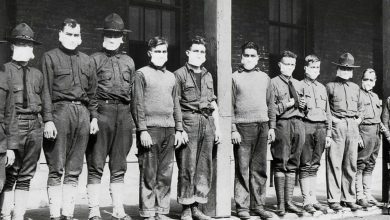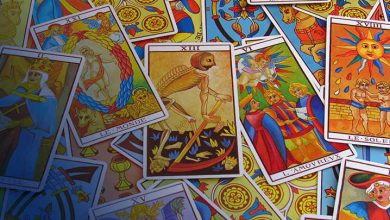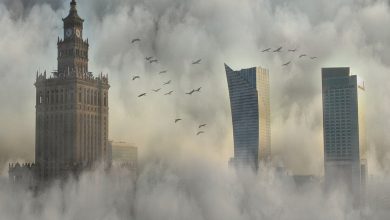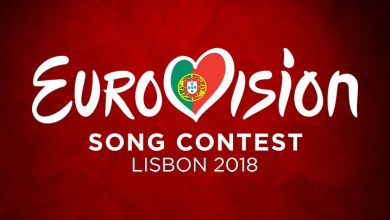
Fall is the perfect season to talk all things spooky, and there’s plenty to be found in every corner of the European continent. From harvest feasts to creepy carnivals, these traditions typically originated in medieval Christian or Pagan rituals, and were later incorporated in Christian traditions. They remain with us to this day – if in much tamer form, thankfully!
A complete or even representative survey of all these cultural practices would be impossible, but with Halloween just behind us and the darkest months of the year ahead, this is a great time to take a peek into some of the spookiest things Europeans do when – in the words of famous author George R.R. Martin – the nights are dark and full of terrors.
Santa’s Spooky and Evil Twin
In southern Germany, Austria, and Sudtyrol, Santa Claus’ spooky evil twin makes a yearly appearance. We are of course talking about Krampus, who snatches wayward and naughty kids on Christmas. Krampus is a relatively well-known, if minor Christmas figure, popularised by (among other things) the 2015 movie of the same name. In the folklore stories, the kids’ ultimate fate is left unspoken, but we can safely assume it to be absolutely horrifying.
It’s not clear why anyone would want to rub this in during the holiday season – but for over five centuries now, Krampusläufe (Krampus walks) have been a fixture of early December in these regions of Europe. During these walks, people dress up as Krampus, which involves a lot of fur, demon masks, and nasty fangs. Clad in these fashionable costumes, the paraders go around town in what must be a concerted wave of terror for the local kids. Sounds like some spooky fun!
Spooky Carnivals and Future Harvests
Creepy carnivals are typical of many regions in Europe, and rituals made to mark the passing of the seasons are even more widespread. As the days grow colder and the nights grow longer, Europeans re-enact the propitiatory rituals of their ancestors, ushering in the future harvest as the circle of life metaphorically begins anew. From wicker baskets to burning brands and flaming scarecrows, these events are strongly impressed in the collective conscience of all Europeans, thanks to the particular intensity of their symbology, bringing together life and death.
The two aspects – spooky parades and rituals of seasonal renewal – occasionally go hand in hand: death is in life, and from death new life can bloom anew, just like spring follows winter. This is the case with practices such as Kukeri, a Bulgarian tradition. People hit the streets wearing long masks resembling a pointy hat. The masks are milk-white and adorned with gaping jaws and terrible fangs, as well as twisted horns and cold, lifeless eyes. The paraders are tasked with driving away evil spirits from people’s homes, after which they dance in the squares to the sound of bells tolling. Obviously, all this has to take place at night, lest the sun catches the masked paraders on the road.

A similar event takes place in Serbia during the early months of the new year. This spooky winter carnival sees fantastic masks of outrageous size and complexity, and the common themes are nature and decay: bird feathers, animal heads, sheep skins, cattle belts and more such attires. The masked paraders arm themselves with clubs and wooden swords, occasionally blackening their faces with dark paint, and proceed to exorcise winter demons and usher in the spring. Naturally, the ritual is propitiatory to good health and bountiful harvests in the spring to come.
Halloween
Halloween is a popular holiday in the West these days, and primarily known for its successfully marketed iconography: carved pumpkins, bats, spooky masks, children prowling neighbourhoods asking “trick or treat?” at every door. Many falsely believe Halloween to have originated in the United States, but the festival is actually completely European. Its origins are in pre-Christian Ireland, and it stems from a common theme in ancient European autumn festivities: when the nights grow longer, the veil between our world and the afterlife grows thinner. Demons prowl the Earth, ghosts and damned souls wander in the night, and the dead come walking – a phenomenon the Gaels called “Samhain“.
In order to appease the gods and restore the division between worlds, the Gaels would collect food (hence trick or treat), light massive bonfires, and carve spooky faces into turnips (later pumpkins) placing candles within, to scare the dead away. The legend of Jack O’Lantern, a soul that neither heaven nor hell will take in and is condemned to roam the Hearth by candle light, is the purported origin of the carvings. While heavily filtered through the trappings of modernity, all the key spooky elements of the festival remain with us to this day.

Until Death Do You and Your Cheese Apart
Geography always has a powerful impact on culture, and that is especially true of mountains. Isolated mountain communities are often left out of the march of time sweeping the wider world, and they occasionally develop their own unique twists or quirks on cultural practices. Naturally, these practices sometimes center around death.
The Swiss mountain hamlet of Grimentz, located in the high-elevation valley known as Val d’Anniviers, has had to contend with more than just isolation over the centuries. In pre-modern times, survival on the jagged peaks was not guaranteed, leading to elaborate rituals regarding the preservation of nourishing food – and its connection to death. Cheese, in particular, is at the center of death rituals in Grimentz: whenever a person is born, they are assigned a wheel of cheese. This cheese is left to age for the entirety of its owner’s life, and is only served once the latter passes away, at the funeral.

While morbid, this ritual has some very distinct origins. First of all, there is the tie between people and the nutritious, hearty dairy that allows them to survive the mountains: the bells of the deceased’s cows are made to ring at the funeral to mark the passing, for example, and the ceremony includes a picnic in honour of the deceased, where wine and bread accompany their life-long cheese wheel. The emotional bonding is a reaffirmation of communal life after death, but the cheese is more than just a testament to the life of the deceased: it’s also a sign that the person left something for other people to nourish themselves. A seasoned cheese hard as nails is both the legacy of a long life and of a communal spirit in a harsh environment hostile to human survival.
Thorri’s Spooky Feast
Decay, death, rejuvenation, life, the harvest, evil demons, and food: all the themes outlined so far come together in a creepy last hurrah during Thorri’s Feast, an Icelandic holiday that takes place in January. To mark the new year, Icelanders commit to eating the most disgusting food imaginable: fermented shark, sour ram testicles, and boiled sheep heads. Definitely a yummy way to begin the new year!

Somewhat more common, but not universally popular recipes such as liver sausages and blood pudding are also in evidence. The origins of the feast are hazy, but Thorri is believed to personify winter. Fermenting or salting food was a way of preserving it in pre-industrial times. It’s conceivable that, as the shortest days of the year were finally behind, the Icelanders of yore could dip into their food stores and sustain themselves through the feast.





